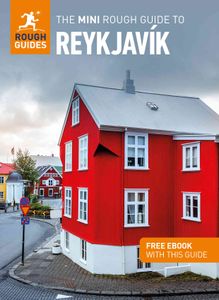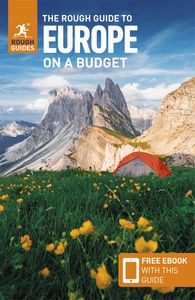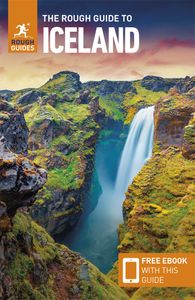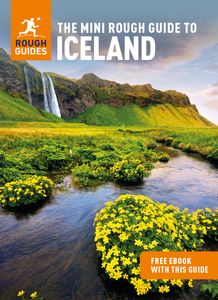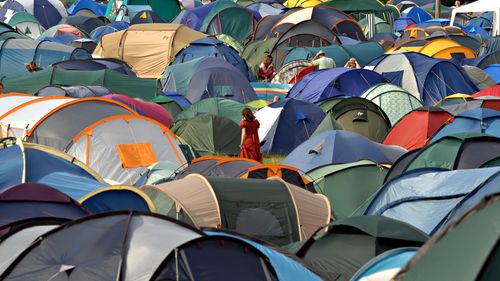Getting around Iceland's interior
Of all the various tracks, only two routes across the Interior actually traverse the whole way between north and south Iceland. The most dramatically barren of these is Sprengisandur (Route F26), which crosses between the Hekla area in the south and Lake Mývatn in the north. The alternative is Kjölur (Route 35), from Gullfoss to near Blönduós, which has less dramatic scenery but is the only route on which you might be able to use normal cars.
Other routes lead into the Interior but don’t offer a complete traverse. The western Kaldidalur route (Route 550) runs between Borgafjörður and Þingvellir; east of Lake Mývatn; the F88 follows the course of the mighty Jökulsá á Fjöllum south to the Askja caldera, from near where the F902 continues towards Kverkfjöll; heading inland from Egilsstaðir, Route 910 heads towards Snæfell (en route to Karahnjúkar), before becoming the F910 and kinking northwest to join the F88, while the Fjallabak route (F208) runs behind the south coast’s ice caps.
Sprengisandur: Route F26
Featuring the most desolate terrain found in Iceland, Sprengisandur is the bleak highland desert east between Hofsjökull – the rounded ice cap marking Iceland’s geographical centre – and Vatnajökull’s northwestern front. Although providing something of a corridor in Viking times between Iceland’s northeastern settlements and the summer parliament at Þingvellir, crossing Sprengisandur was always a tough journey, the desert flooded in spring with melting snow and ice, yet too dry in summer to provide any grazing for horses. Indeed, most travellers preferred to take much longer coastal roads, and Sprengisandur was eventually abandoned as a route during the thirteenth century.
Traversed today by the F26, which begins northeast of Hekla and runs some 244km across the desolate, icy plateau between Hofsjökull and Vatnajökull to the Ringroad at Goðafoss, the Sprengisandur route remains a challenging one, whose unbridged rivers and stark scenery provide an insight into medieval Iceland’s harsh living conditions. The enduring image here is of nothingness: the glaciers and mountains that fringe the horizon seem a long way off, and the space in between is filled with mile after mile of grey sand, stones and rocks that have lain untouched for thousands of years.
Kjölur: Route 35
Running between Gullfoss in the south and the Ringroad near Varmahlíð, at 200km long Kjölur is the shorter of the two inland routes across Iceland. Pioneered by the earliest settlers and recorded in the Book of Settlements, Kjölur was always considered a safer route than Sprengisandur, though it passes between the Hofsjökull and Langjökull ice caps and was abandoned after the death of a large party in 1780. Today it qualifies as a highway – if any Interior route can claim to be one – with buses, coaches, four-wheel-drives and even ordinary family sedans bouncing along it during the summer months. All the rivers have been bridged, but be aware that Kjölur’s rough gravel track is still capable of shredding tyres, tearing off exhausts and puncturing sumps: keep your speed down, especially if driving conventional, low-slung vehicles. Note that ordinary rental vehicles are not allowed along this route.
Eyvindur and Halla
Iceland’s most famous outlaws were the eighteenth-century Eyvindur and his harsh-tempered wife, Halla. They are the only Icelandic outlaws to have managed twenty years on the run, thus earning themselves a pardon; many places around Iceland are named after Eyvindur, showing just how much he had to keep moving.
Originally from the West Fjords, Eyvindur and Halla set up at Hveravellir, robbing travellers and stealing sheep from nearby properties. Eventually chased on by a vengeful posse, they shifted south to the Þjórsá (west of Hekla) for a few years – the easiest time of his outlawry, so Eyvindur later said – then to remoter pastures on the Sprengisandur, which at that time hadn’t been crossed for many years. Caught after stealing a horse, Eyvindur and Halla were held at Mývatn’s church, from where Eyvindur managed to escape by asking to be untied so that he could pray. As luck would have it, a thick fog came down and he was able to hide nearby until people had given up looking for him, thinking him far away. He then stole another horse and rode it south to Herðubreiðarlindir, where he somehow survived an appalling winter in a “cave” he built into the lava here. Later on, he met Halla again and they drifted around the country, always just managing to evade capture but forced by hunger or pursuit to kill their infant children. Tradition has it that after being pardoned they returned to their farm, where they died in the 1780s.
Hveravellir
Route 35’s midpoint is marked by a short detour west to a grassy depression at Hveravellir hot springs, where you’ll find a campsite and well-appointed overnight huts. The only pool cool enough for a soak is a small, waist-deep affair next to one of the huts, above which boardwalks head up a calcified slope; encrusted with sulphur, the hotter springs here bubble, belch and occasionally erupt violently. One of these is named Eyvindarhver, after the outlaw Eyvindur who lived at Hveravellir for two years and used the spring to boil up sheep for his dinner. In summer, the springs can get busy, so try to time your dip to avoid scheduled daily bus arrivals in the early afternoon – or stay overnight and have the waters almost to yourself.
The Kjölurvegur trek
The Kjölurvegur trek is an excellent two- to three-day hike from Hveravellir to the glacial lake of Hvítárvatn, following the original Kjölur route that ran west of the present Route 35, hugging the slopes of Langjökull: it’s punctuated by overnight huts run by Ferðafélag Íslands (book in advance through), roughly four to six hours’ walk apart.
From the springs, follow the F735 west towards the glacier for roughly 14km to the Þjófadalir overnight hut. Here the jeep track peters out into a walking path as it swings southeast, around the tiny Hrútfell glacier, to another overnight hut at Þverbrekknamúli. From here, it’s a further straightforward hike of around four to six hours to reach the Hvítárnes hut, an idyllic if somewhat lonely place to break the journey – the hut is supposedly haunted by a young woman who lived hereabouts when the area was farmed, though only men who sleep in a certain bed in the hut will see her.
From the hut, it’s an easy 8km walk back to Route 35 and the bus to either Reykjavík or Akureyri, passing the beautiful Hvítárvatn glacial lake, at the foot of Langjökull, on the way.
The F88 to Askja
The F88 drops down from the Ringroad east of Mývatn towards two of the Interior’s most stunning landmarks: the isolated, ice-bound platform of Herðubreið; and the enormous Askja caldera, with its twinned crater lakes. Though most people visit onday-tours, there’s excellent hiking in the region and several convenient huts if you plan to stay longer – check out the “Askja Trail” tab at ffa.is/en.
Askja
Off the end of Route F88 in the heart of the dismal Ódáðahraun, Askja is an 8km-wide volcanic depression, formed from a collapsed subterranean magma chamber. In the centre is a 217m-deep lake, Öskuvatn, its steel-grey waters doing nothing to brighten the setting among a colossal lava field which drained out of Askja in prehistoric times. More recent events have included the appalling eruption at Viti in 1875, and another big outflow of lava in the 1960s, which you traverse en route to the caldera’s rim; and, in 2014, a new event at Holuhraun, off to the south.
How to get to Askja
Due to Iceland's rising popularity, there are many tours and packages you can take part in that include a visit to Askja. Often with a knowledgeable guide should you wish to learn more about the landscapes and history. However, if you wish to travel independently then have no worries as the ring road in Iceland makes travel fairly easy.
If driving, a 4x4 is recommended due to the several water crossings and rough terrain in certain areas. Drive along the Ring Road, along road 1 past Akureyri and Myvatn until you reach road 901. From 901, take a right onto f905 and drive for around 21 km until you reach f910. From f910 drive about 62 km until the very end of the road where you will see the shelter and camping grounds.
Viti Volcano and Oskjuvatn Lake
In amongst the unspoiled scenery of Askja is Viti Volcano, a volcano with a milky blue lagoon sitting in its crater. You can swim in the crater, but be sure to check with the ranger beforehand as it is sometimes restricted due to dangerous muddy slopes. The remote location means peace and quiet on the 45-minute hike to and from, which is relatively flat and easy-going. This particular trial was used in the 1960s during the Apollo Program to train astronauts for the similar terrain to the moon.
Oskjuvatn Lake is the deepest lake in Iceland and sits in perfect harmony next to Viti.
Herðubreið
Just off Route 88 between Mývatn and the Askja caldera, the crown-like formation of Herðubreið towers 1682m over the featureless lavafield of Ódáðahraun (Desert of Misdeeds). Herðubreið’s brown, snow-streaked platform is so remote that it remained unconquered until 1908, and an ascent to the summit still requires basic mountaineering skills and equipment.








